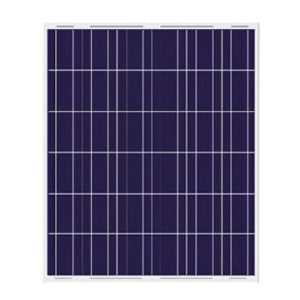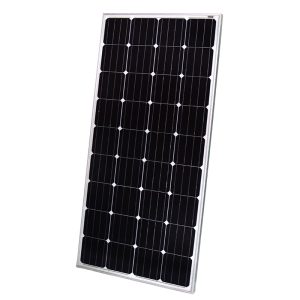In the realm of solar energy, 600 Watt Solar Panels stand as a middle-ground solution that balances efficiency, cost, and adaptability. Whether you’re a homeowner looking to reduce your carbon footprint or a business aiming for sustainability, understanding the intricacies of a 600 Watt solar panel can be your stepping stone to making an informed decision.
Why 600 Watts? The Sweet Spot in Solar Energy
The Goldilocks Zone of Solar Power
When it comes to solar panels, size does indeed matter. But why is 600 Watts often cited as the “Goldilocks Zone” of solar power? The answer lies in a confluence of factors that make 600 Watt Solar Panels neither too big nor too small, but just right for a wide range of applications.
Efficiency vs. Space: The Geometry of Green Energy
The efficiency-to-space ratio is a critical metric in the world of solar energy. It essentially measures how much energy a panel can produce per square foot. In urban settings, where space is at a premium, this ratio becomes even more crucial. A 600 Watt Solar Panel typically measures around 40 square feet, which means it can easily fit on most residential rooftops without requiring any significant modifications.
Optimal Roof Utilization
For a typical suburban home with a roof size of about 1,500 square feet, installing a 600 Watt system would only take up about 2.7% of the total roof space. This leaves ample room for future expansions or other rooftop installations like satellite dishes or HVAC systems.
The Power Density Factor
A 600 Watt Solar Panel usually has a power density of around 15 Watts per square foot. This is a significant improvement over lower wattage panels, which often have power densities below 10 Watts per square foot. The higher the power density, the more energy you can generate in a given space, making 600 Watt panels an excellent choice for those looking to maximize their energy output.
Cost-Effectiveness: The Economics of Solar Power
While it’s tempting to go for the highest wattage panels available, the law of diminishing returns often kicks in. Higher wattage panels are not only more expensive upfront but may also require additional costs for reinforced mounting systems and more complex electrical setups.
Initial Investment and ROI
A 600 Watt Solar Panel system typically costs between $1,500 and $2,000, including the inverter and other essential components. When you factor in federal tax credits and potential state incentives, the net cost can be much lower. Most homeowners find that a 600 Watt system pays for itself in energy savings within 5 to 7 years, offering an attractive return on investment (ROI).
Operational Costs and Maintenance
The operational costs for a 600 Watt Solar Panel system are relatively low. These panels are robust, require minimal maintenance, and usually come with warranties that last for 25 to 30 years. This makes them a financially sound choice for long-term energy savings.
Types of 600 Watt Solar Panels: A Comparative Analysis
Monocrystalline Panels: The Premium Choice
Monocrystalline panels are made from a single crystal structure, providing the highest efficiency rates in the solar industry—often exceeding 20%. These panels are also more space-efficient, meaning you’ll need fewer of them to achieve the same energy output as other types. However, this efficiency comes at a cost; monocrystalline panels are generally the most expensive type of solar panel.
Longevity and Durability
Monocrystalline panels are known for their durability and longevity. Most come with a 25-year warranty, and it’s not uncommon for these panels to last upwards of 30 years. This long lifespan often justifies the higher upfront cost, making them a wise investment for those looking for long-term sustainability.
Polycrystalline Panels: The Budget-Friendly Option
Polycrystalline panels are made from different crystal structures, making them less efficient but also less expensive. They are a good option for large installations where space is not a limiting factor, such as in commercial or agricultural settings.
Cost per Watt
The cost per watt for polycrystalline panels is generally lower than that of monocrystalline panels. This makes them an attractive option for projects with a tighter budget but more available space.
Thin-Film Panels: The Versatile Alternative
Thin-film panels are the least efficient of the three main types but offer the highest level of versatility. They can be used in a variety of applications, from small portable chargers to large-scale installations.
Flexibility and Adaptability
Thin-film panels are incredibly flexible and can be adapted to curved surfaces, making them ideal for unconventional installations like boats, RVs, or even clothing. However, their lower efficiency makes them less suitable for standard residential or commercial applications where space is limited.
Installation and Maintenance: A Detailed Roadmap
Site Assessment: The Blueprint of Success
Before you even think about purchasing panels, a comprehensive site assessment is the first and perhaps most crucial step in the installation process. This isn’t merely about measuring your roof; it’s about understanding how every variable could affect your solar energy production.
Roof Angle and Orientation
The angle and orientation of your roof can significantly impact the efficiency of your 600 Watt Solar Panel system. For optimal energy production, the panels should face south in the Northern Hemisphere. The ideal angle is usually the latitude of your location, although this can vary based on specific local conditions.
Local Weather Conditions
Solar panels are most effective in sunny conditions, but what if you live in a cloudy or snowy area? Modern solar panels are designed to be effective in a variety of weather conditions, but understanding your local climate can help you choose the right type of panel and even the right type of solar cell.
Potential Obstructions
From tall trees to neighboring buildings, potential obstructions can cast shadows and significantly reduce your system’s efficiency. A detailed site assessment should include a shading analysis to identify any such issues.
Installation Process: More Than Just Bolting Panels
Installing a 600 Watt Solar Panel system is a complex task that goes beyond merely attaching panels to your roof. It’s a multi-step process that requires careful planning and execution.
Mounting System
The first step is to install the mounting system, which will hold your solar panels in place. There are various types of mounting systems, including fixed mounts, tracking mounts, and even solar shingles. The choice of mount will depend on your specific needs and the results of your site assessment.
Panel Installation
Once the mounting system is in place, the next step is to install the panels. This involves securely attaching them to the mounts and connecting each panel to the next, forming an array.
Electrical Connections
After the panels are securely mounted, they need to be connected to your home’s electrical grid. This involves installing an inverter to convert the direct current (DC) produced by the panels into alternating current (AC) that your home can use.
Ongoing Maintenance: Keeping the Engine Running
Solar panels are relatively low-maintenance, but “low” doesn’t mean “no.” Regular cleaning and inspections are crucial for maintaining the efficiency of your 600 Watt Solar Panel system.
Cleaning Schedule
Dirt, leaves, and even bird droppings can accumulate on your solar panels, reducing their efficiency. A monthly cleaning is usually sufficient, although this may vary based on local conditions.
Regular Inspections
At least once a year, it’s advisable to have your system inspected by a professional to ensure all components are in good working condition. This includes checking the mounts, the state of the solar cells, and the inverter.
Incentives and Financing: Making Solar Affordable
Federal Tax Credits: A Significant Boost
The federal government offers a tax credit that can cover up to 26% of the cost of your solar panel system, including installation. This can significantly reduce your initial investment and improve your system’s long-term ROI.
State and Local Incentives: The Cherry on Top
Many states and local governments offer additional incentives, such as rebates and grants, to encourage the adoption of solar energy. These incentives can vary widely by location but can make an already attractive financial proposition even more compelling.
Conclusion
A 600 Watt Solar Panel system offers a balanced approach to sustainable energy. With its blend of efficiency, cost-effectiveness, and adaptability, it stands as a compelling option for both residential and commercial applications. As solar technology continues to evolve, the 600 Watt system remains a steadfast and reliable choice for those looking to make a long-term investment in clean energy.



